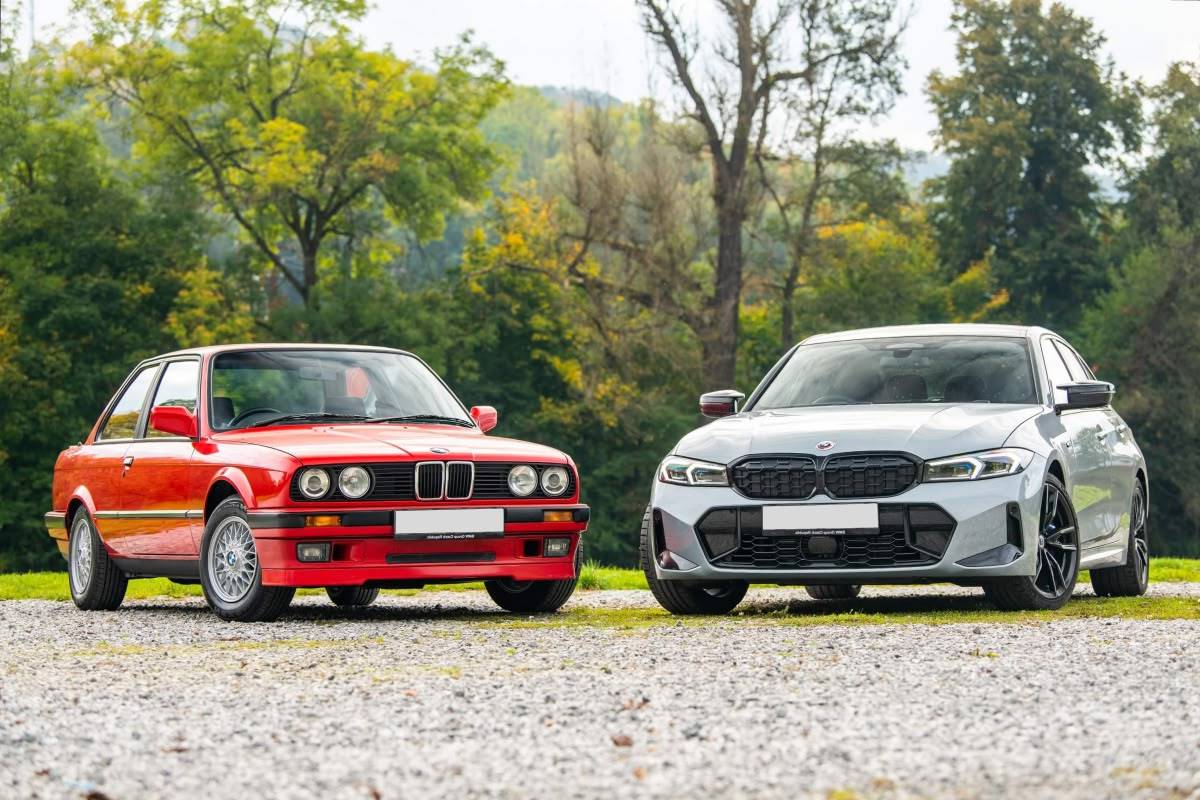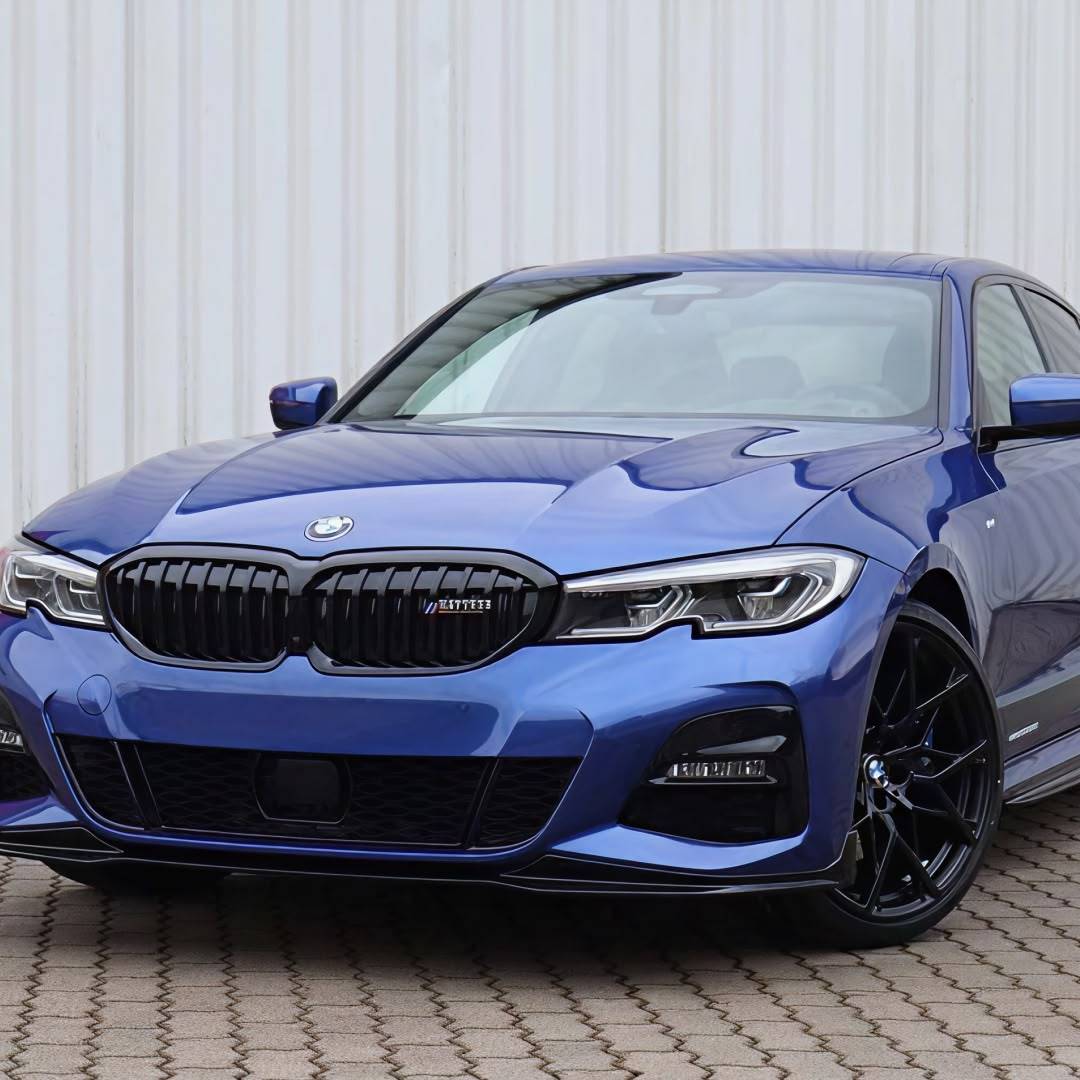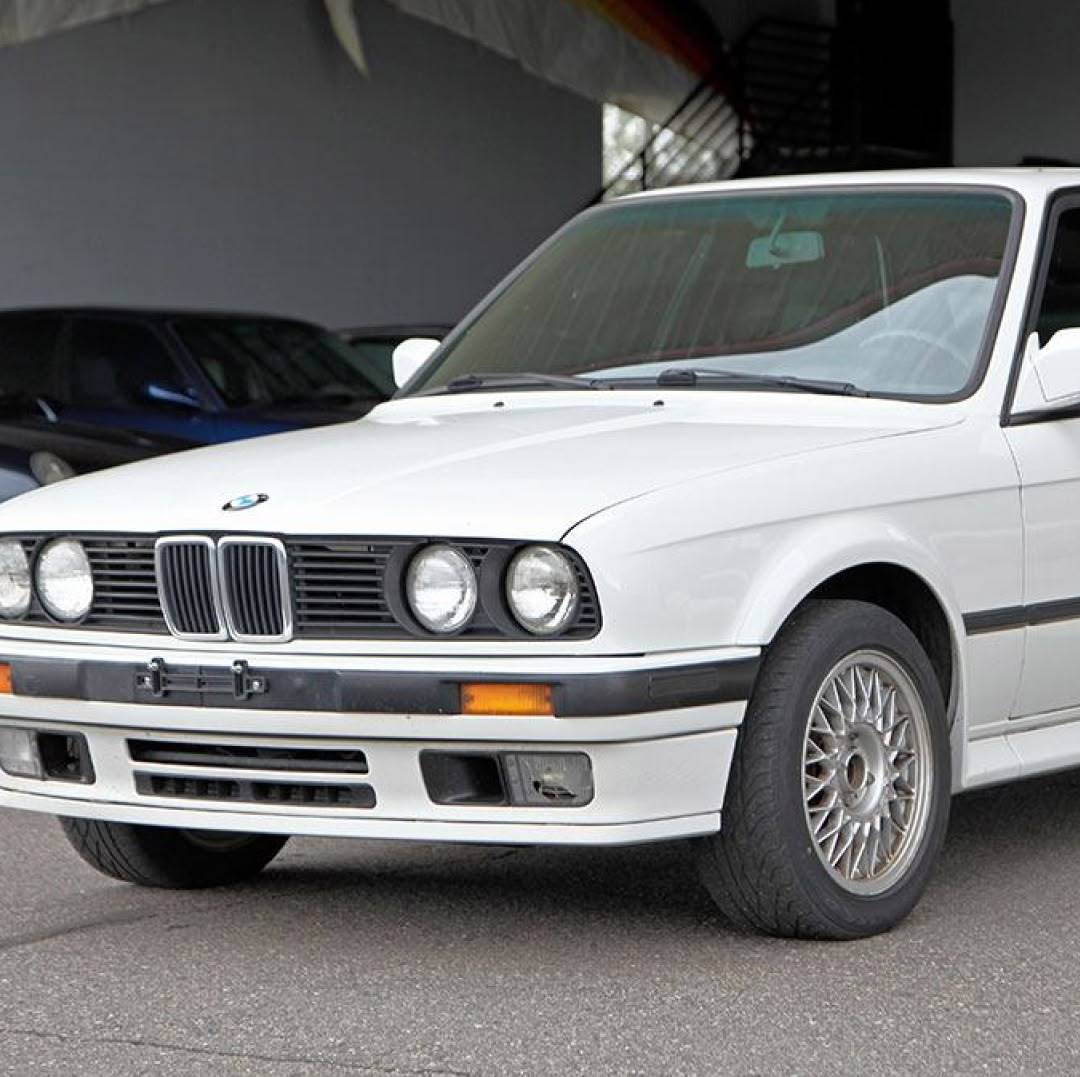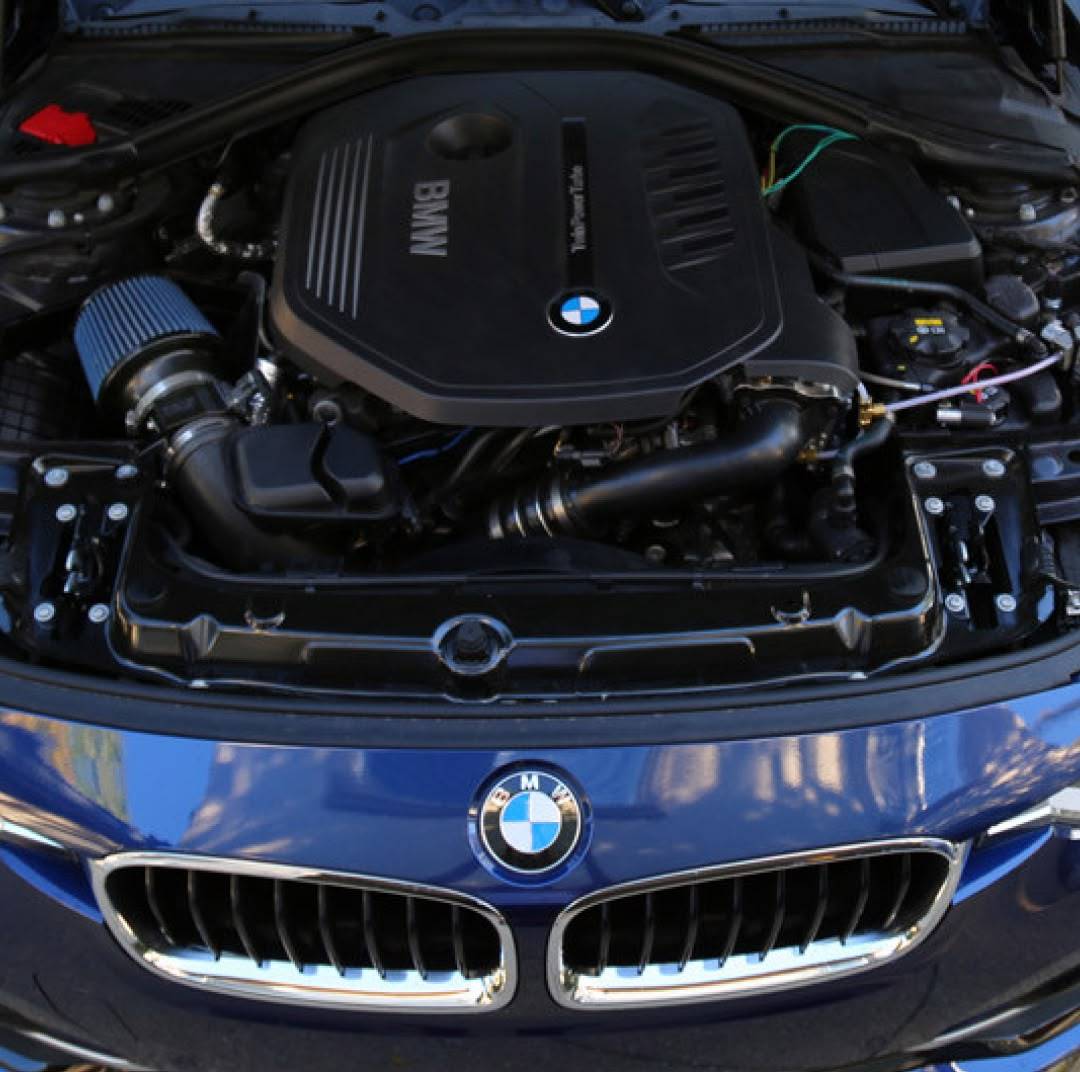[[post.title]]
We're changing for you!
Check out our new website
We're changing for you!
Check out our new website
May 9, 2025

Ready to dive into the world of BMW's popular 3 Series? Buckle up—though you won't need that five-point racing harness just yet—as we take you through everything you need to know about this compact executive car. From its humble beginnings to its tech-filled present, we'll explore how this model has evolved over nearly five decades and why it continues to be a strong contender in its segment.
Enjoy the reading!
The BMW 3 Series is a compact executive car that has been a staple of BMW's lineup since its introduction in 1975. It aims to offer a solid blend of performance, luxury, and everyday practicality. Think of it as the automotive equivalent of someone who excels at sports, gets good grades, and still manages to have a social life.
In BMW's model offering, the 3 Series sits comfortably between the smaller, entry-level 2 Series and the more luxurious BMW 5 Series. While the 2 Series offers a more affordable entry point to the BMW brand, it lacks the refinement and spaciousness that make the 3 Series such a compelling option. On the flip side, the 5 Series delivers more luxury and presence, but sacrifices some of the nimble handling that makes the 3 Series a driver's delight.
Price-wise, the BMW 3 Series starts at approximately $45,950 for the base 330i model (as of May 2025). More sporty, mid-range variants like the M340i can cost upwards of $60,200. For those wanting the full-blown M Performance experience, the mighty M3 will set you back over $76,700 when fully loaded.
When it comes to equipment options, BMW offers a variety of trims to suit different tastes and budgets:

The current generation of the BMW 3 Series (codenamed G20 for the sedan and G21 for the wagon version) offers various powertrains to suit different driving styles and needs. And different markets, since not all engines are available internationally.
This D-segment compact executive car comes with engine options ranging from turbocharged 2.0 L inline-four engines to 3.0 L turbo inline-six powerplants. For those who prioritize fuel efficiency, there are also electrified plug-in hybrid and Diesel variants available in some markets (EU, for example).
What performance figures do the particular 3 Series models offer?
| Version | Displacement | Power / torque | 0–60 mph | US market? |
| 318i | 2.0 L | 154 hp / 184 lb-ft | 8.2 s | x |
| 320i | 181 hp / 221 lb-ft | 7 s | x | |
| 320e | 201 hp / 258 lb-ft | 6.8 s | x | |
| 330e | 288 hp / 310 lb-ft | 5.7 s | x | |
| 330i | 255 hp / 295 lb-ft | 5.6 s | ✔ | |
| 330i xDrive | 5.4 s | |||
| M340i | 3.0 L | 382 hp / 369 lb-ft | 4.4 s | ✔ |
| M340i xDrive | 4.1 s | |||
| M3 | 473 hp / 406 lb-ft | 4.1 s | ✔ | |
| M3 Competition | 503 hp / 479 lb-ft | 3.8 s | ✔ | |
| M3 Comp. xDrive | 523 hp / 479 lb-ft | 3.4 s | ✔ |
In all of these instances, the top speed is electronically limited to approximately 155 mph (250 km/h) for safety reasons. Though if you’d like for BMW to stop caring about your safety as much, you can always get the M Driver’s Package for a mere $2,500 – this option raises the top speed.
Dimensionally, the 3 Series stretches approximately 185.4 inches in length and 72 inches in width, striking the perfect balance between road presence and urban maneuverability. Practicality isn't forgotten either, with the sedan offering around 17 cubic feet of boot space, while the wagon bumps that up to a generous 17.7 cubic feet.
Fuel efficiency is equally impressive, with petrol engines returning approximately 29–39 MPG and diesel variants (available in European markets) achieving an impressive 39–59 MPG. These figures make the 3 Series an economical choice for both daily commuting and long-distance journeys.
While not available in the American market, the BMW 3 Series Touring (wagon) represents an interesting variant in BMW's global lineup. Popular in European markets, this version combines the sedan's driving dynamics with expanded cargo capacity.
The Touring offers up to 17.7 cubic feet of cargo space with all seats in place. It features thoughtful design elements like an independently opening rear window for accessing the trunk in tight spaces.
The Touring's storied history began with the E30 generation in 1987, evolving from a practical family hauler into one of the most stylish and desirable wagons on the market. Over the decades, it has perfected the art of combining sports sedan dynamics with estate car practicality, making it a favorite among enthusiasts who refuse to sacrifice driving pleasure for functionality.
If you’re anything like us and love wagons, but are unhappy that they are a dying breed, we recommend you check our recent mini-documentary video on YouTube. In Why Did BMW Kill the Wagon in the US?, Dylan is taking a look at the reasons for BMW Touring’s disappearance.
The BMW M3 represents the high-performance pinnacle of the 3 Series lineup. Originating in 1986 as a homologation special for touring car racing, the M3 has evolved through multiple generations into one of BMW's most iconic performance models.
Today's G80 generation features a twin-turbocharged 3.0-liter inline-six engine producing up to 503 hp in Competition trim. This power enables impressive acceleration, with the xDrive all-wheel drive variants reaching 0–60 mph in just 3.4 seconds. Available as a sedan, the current model offers exceptional performance with practical versatility.
The M3 comes equipped with sophisticated performance technology including adaptive suspension, optional carbon ceramic brakes, and multiple driving modes that adjust the car's character from comfortable daily driver to track-focused performer. The vehicle successfully balances BMW's performance heritage with modern engineering, creating a sports car that remains usable for everyday driving while delivering exceptional performance capabilities.
The current generation is also when the first BMW M3 Touring debuted – unfortunately, this body style is available only overseas (in Europe, for example). It’s only offered in xDrive and in Competition trim, producing the same 503 hp as the sedan.
Though not available in the American market, Bavarians offer several electrified versions of the BMW 3 Series in other global regions as part of the company's broader electrification strategy.
The flagship BMW 330e plug-in hybrid combines a turbocharged petrol engine with an electric motor for a combined system output of 288 hp and 310 lb-ft of torque. The 330e can travel approximately 30–37 miles on electric power alone, making it suitable for emission-free city driving. All while maintaining conventional power for longer journeys.
Additionally, many European BMW 3 Series models feature mild-hybrid technology in their conventional engines. These systems use a small battery and integrated starter-generator to assist during acceleration, enable more efficient start-stop functionality, and improve overall fuel efficiency without requiring external charging.
If you've been following BMW's lineup evolution, you might have noticed that the coupe version of the 3 Series mysteriously vanished a few years back.
Until the F30 generation, coupe versions were proudly part of the BMW 3 Series family. However, starting with the 2014 model year, BMW made a strategic decision to split these variants into their own distinct model line – the BMW 4 Series. This move allowed for greater differentiation in design and marketing, giving the sportier two-door models room to develop their own identity.
Despite this separation, both the 3 and 4 Series remain closely related, sharing platforms, engines, and many components. Think of it less as a divorce and more like that friend who changed their name and got a new haircut but is still fundamentally the same person underneath.
The story of the BMW 3 Series begins in May 1975, when BMW unveiled a car that would forever change the automotive landscape. Over nearly five decades, this compact executive car has evolved through seven generations.
It all started with the E21 (1975–1982), a nimble two-door sedan that introduced the world to BMW's philosophy of driver-focused engineering. With its responsive handling and rear-wheel drive dynamics, the original 3 Series quickly established itself as the driver's choice in its segment.
As the 1980s arrived, so did the now-legendary E30 (1982–1994). This generation expanded the 3 Series family to include convertible and wagon variants, broadening its appeal while maintaining its sporting credentials. The E30 era also witnessed the birth of the first M3 – a homologation special that would evolve into one of the most revered performance cars of all time. With its boxy silhouette and analog driving experience, the E30 remains a cult classic that captures the essence of BMW's "Ultimate Driving Machine" ethos.

The 1990s brought the more refined E36 (1990–2000), which embraced a sleeker design language and improved aerodynamics. This generation introduced the first hatchback variant (the Compact) and represented BMW's push toward more sophisticated engineering while maintaining the engaging driving dynamics that defined the model.
With the turn of the millennium, the E46 (1998–2006) arrived and quickly established itself as the benchmark in its class. With its perfect balance of analog feel and modern conveniences, the E46 is often regarded as the sweet spot in 3 Series history. Even today, these models remain highly sought after on the used market.
The mid-2000s saw the arrival of the more technologically advanced E90/E91/E92/E93 generation (2005–2013). With its diverse body styles, this generation demonstrated BMW's commitment to innovation while maintaining the spirited driving character that fans had come to expect.
Following industry trends, the F30/F31/F34/F35 generation (2011–2019) embraced turbocharging across its range. This era also saw the introduction of plug-in hybrid models and a significant brand shift, with the coupe variants being rebranded as the "4 Series".
Today's G20/G21/G28 generation (2019–present) represents the most technologically advanced 3 Series yet. Featuring cutting-edge systems like the iDrive 8 infotainment suite and sophisticated driver assistance features, the current model maintains the 3 Series' driver-focused DNA while embracing the digital age.
Though larger and more refined than its predecessors, it continues to deliver the engaging driving experience that has defined the model for nearly half a century. For a more detailed journey through the 3 Series history, we recommend you check our detailed mini-docummentary: History of the BMW 3 Series.
The compact executive segment is competitive, with each contender bringing its own approach to the table. So, how does the BMW 3 Series stack up against its rivals?
The Audi A4 (and now A5) comes equipped with its well-regarded Quattro all-wheel-drive system and tech-focused interior, but generally doesn't deliver quite the same driver engagement as the 3 Series' rear-wheel-drive setup. Audi owners, of course, will firmly disagree while enjoying superior traction in the snow.
The Mercedes-Benz C-Class prioritizes comfort, creating a more relaxed driving experience. It's the choice for those who prefer their premium sedan to whisper rather than shout, though enthusiasts might find it less entertaining on winding roads.
The Genesis G70 has emerged as a noteworthy challenger, offering solid value and respectable performance. What it lacks in European badge prestige it tries to make up for in value, though its dealer network can't yet match the German trio's ubiquity.
For those willing to look beyond luxury brands, high-spec versions of the Mazda 6 and Hyundai Sonata offer comparable dimensions and decent performance at lower price points. They won't impress the valet as much, but they'll leave more money in your account.
The 3 Series' main strength is its versatility – it handles most driving scenarios competently, from highway cruising to urban navigation to the occasional spirited drive. This balanced approach has helped maintain its position as a segment benchmark over the years.
Exciting times lie ahead for this BMW's model, with spy shots of the next-generation 3 Series already circulating across the internet. These images reveal a design language heavily influenced by BMW's controversial Neue Klasse concept, which represents the future direction of the brand's styling.
From what we can glimpse beneath the camouflage, the new 3 Series will feature sleeker, more futuristic styling with slimmer LED headlights, a redesigned kidney grille (thankfully not oversized like some recent BMW models), flush door handles for improved aerodynamics, and quad exhaust tips on performance variants.
Under the skin, BMW will likely continue offering internal combustion engines alongside more hybrid and electric options. The next generation will probably include a dedicated electric variant – most likely branded as the i3.
Performance enthusiasts needn't panic just yet – rumors suggest the next-generation M3 will maintain its driver-focused character, possibly with more power and updated chassis technology. After all, BMW knows better than to completely alienate the enthusiasts who've spent decades defending their choice of German sports sedan at dinner parties.
The reliability of the BMW 3 Series has evolved over generations, with newer models generally offering better dependability than their predecessors..
The E90 M3, with its high-revving 4.0L V8 engine, became known for rod bearing failures due to lubrication problems – the kind of problem that turns your expensive sports sedan into an expensive paperweight if not caught early. These issues with bearing wear could lead to catastrophic engine failure if not addressed, making regular oil analysis a must for owners of these models.
The F30 generation wasn't immune to troubles either, with its N20 engine facing timing chain issues that could lead to impromptu roadside meditation sessions. These timing chain problems were particularly notorious as they could result in complete engine failure when the chain stretched or broke.
The current G20 generation shows improvement in reliability, particularly with the B48 four-cylinder and B58 six-cylinder engines that have demonstrated better durability. However, no German luxury vehicle is entirely free of quirks – electronic components and suspension parts remain common wear items, especially as the odometer numbers climb higher.
As with any premium vehicle, maintenance isn't optional – it's mandatory. Regular service, quality parts, and prompt attention to warning lights are essential. BMW parts and labor costs will certainly be higher than mainstream brands, so budget accordingly or befriend a BMW technician at your earliest convenience.

One of the joys of 3 Series ownership is the vast aftermarket support, allowing you to personalize your BMW to suit your specific needs and preferences. Here are some of the most popular upgrades to enhance your daily driving experience:
1. BMW CarPlay MMI PRO Retrofit
Transform your infotainment experience by adding seamless smartphone integration, allowing you to access your favorite apps, navigation, and music directly through your BMW's iDrive system. This retrofit is particularly valuable for older models that didn't come with this technology from the factory. As a bonus, the MMI PRO has an HDMI port that allows video playback from external streaming devices.
2. 10.25-inch iDrive Screen Upgrade
Replace your smaller factory display with a 10.25-inch screen that not only looks more modern but also improves usability with larger touch targets and enhanced visibility. This F30/F32-compatible upgrade brings a more contemporary feel to your interior without requiring a complete dash redesign.
Add the convenience of hands-free trunk opening and closing – a game-changer when your arms are full of groceries or luggage. This practical Power Trunk upgrade integrates perfectly with your BMW's existing systems for a factory-like experience, allowing operation via your key fob, interior button, or even a gentle kick motion under the rear bumper on some models.
For music lovers, few upgrades deliver as much daily enjoyment as enhanced speakers and amplifiers. Transform your driving soundtrack with crisp highs, detailed midrange, and powerful bass that turns every commute into a concert experience. A quality audio upgrade might be the most appreciated modification for those who spend significant time in their vehicle or who consider music an essential part of the driving experience.
Want to know more about improving your car? Here is an in-depth guide to upgrading your BMW 3 Series in terms of creature comfort and interior amenities. If you’d like to dive deeper into the world of Hi-Fi, check out this article about the best BMW 3 Series audio upgrades.
After examining the BMW 3 Series from its history to its future prospects, the question remains: is it a good car? The answer is generally yes – it's a solid option in its segment that does many things well.
The 3 Series offers a good combination of driving dynamics, practicality, technology, and brand recognition. With its range of variants, from efficient diesels to high-performance M models, there's likely a version that aligns with most luxury compact sedan buyers' needs.
For those who value driving experience and are willing to accept the realities of premium car ownership, the BMW 3 Series remains an influential model in the compact executive segment. Its continued relevance through nearly five decades speaks to BMW's ability to evolve the formula while maintaining the core characteristics that attract buyers to the model. Just remember that the blue and white roundel on the hood comes with both benefits and responsibilities.
Reliability varies by generation, with newer G20 models being more dependable than older ones. Electronic components and suspension parts remain common wear items across all generations. Proper maintenance is essential for longevity, with regular service intervals needing strict adherence.
With proper maintenance, a BMW 3 Series can last 200,000–250,000 miles or even more. Regular servicing, addressing issues promptly, and using quality parts are key to maximizing lifespan. Many owners report their well-maintained vehicles reaching high mileage with major systems intact.
A used 3 Series can be good if well-maintained with documented service history from reputable shops. Focus on newer generations like late F30 or G20 models and budget for potential maintenance costs. A pre-purchase inspection by a BMW specialist is highly recommended to identify any hidden issues.
Yes, maintenance costs are higher than mainstream brands, with premium prices for parts and labor. Routine maintenance like oil changes and brake services cost more than non-luxury counterparts. Budget for approximately 50% higher maintenance costs compared to mainstream non-luxury vehicles.
The 4 Series was derived from the 3 Series as a sportier offering with more aggressive styling. While sharing mechanical components, the 4 Series has a lower stance and unique body styling. The 4 Series comes as coupe, convertible and Gran Coupe, while the 3 Series offers sedan and wagon.
New models range from $44,500 for base variants to $75,000 for the high-performance M3. Popular mid-range 330i models cost approximately $49,000–$52,000 depending on options. Used prices vary significantly by age, condition, mileage, specification and service history.
The current G20 generation (2019-present) benefits from improved engines with fewer reported issues. Later E46 models (2002–2006) are considered reliable due to mechanical simplicity and build quality. Both generations represent sweet spots before or after the introduction of more complex electronics.
Power ranges from 184 hp in base 320i models to 503 hp in the high-performance M3 Competition. Popular 330i variants offer around 255 hp, providing a good balance of performance and efficiency. Hybrid models like the 330e combine combustion engines and electric motors for about 292 hp total output.
The 3 Series offers a balanced blend of performance, comfort, technology, and prestige for enthusiasts. It provides excellent handling characteristics, good build quality, and various powertrain options. However, higher maintenance costs and premium fuel requirements mean it's best for driving enthusiasts.
Customer Reviews
Comments
Rate the product
This email is already registered.
Please Log In to continue.
Let us find
the right version for you
We'll confirm pricing, compatibility and product details for your car:
Enter your VINReliability varies by generation, with newer G20 models being more dependable than older ones. Electronic components and suspension parts remain common wear items across all generations. Proper maintenance is essential for longevity, with regular service intervals needing strict adherence.
With proper maintenance, a BMW 3 Series can last 200,000–250,000 miles or even more. Regular servicing, addressing issues promptly, and using quality parts are key to maximizing lifespan. Many owners report their well-maintained vehicles reaching high mileage with major systems intact.
A used 3 Series can be good if well-maintained with documented service history from reputable shops. Focus on newer generations like late F30 or G20 models and budget for potential maintenance costs. A pre-purchase inspection by a BMW specialist is highly recommended to identify any hidden issues.
Yes, maintenance costs are higher than mainstream brands, with premium prices for parts and labor. Routine maintenance like oil changes and brake services cost more than non-luxury counterparts. Budget for approximately 50% higher maintenance costs compared to mainstream non-luxury vehicles.
The 4 Series was derived from the 3 Series as a sportier offering with more aggressive styling. While sharing mechanical components, the 4 Series has a lower stance and unique body styling. The 4 Series comes as coupe, convertible and Gran Coupe, while the 3 Series offers sedan and wagon.
New models range from $44,500 for base variants to $75,000 for the high-performance M3. Popular mid-range 330i models cost approximately $49,000–$52,000 depending on options. Used prices vary significantly by age, condition, mileage, specification and service history.
The current G20 generation (2019-present) benefits from improved engines with fewer reported issues. Later E46 models (2002–2006) are considered reliable due to mechanical simplicity and build quality. Both generations represent sweet spots before or after the introduction of more complex electronics.
Power ranges from 184 hp in base 320i models to 503 hp in the high-performance M3 Competition. Popular 330i variants offer around 255 hp, providing a good balance of performance and efficiency. Hybrid models like the 330e combine combustion engines and electric motors for about 292 hp total output.
The 3 Series offers a balanced blend of performance, comfort, technology, and prestige for enthusiasts. It provides excellent handling characteristics, good build quality, and various powertrain options. However, higher maintenance costs and premium fuel requirements mean it's best for driving enthusiasts.
Customer Reviews
Comments
Rate the product
This email is already registered.
Please Log In to continue.
[[comment.name]]
[[comment.text|raw]]
BimmerTech
Newsletter
[[comment.name]]
[[comment.text|raw]]
BimmerTech